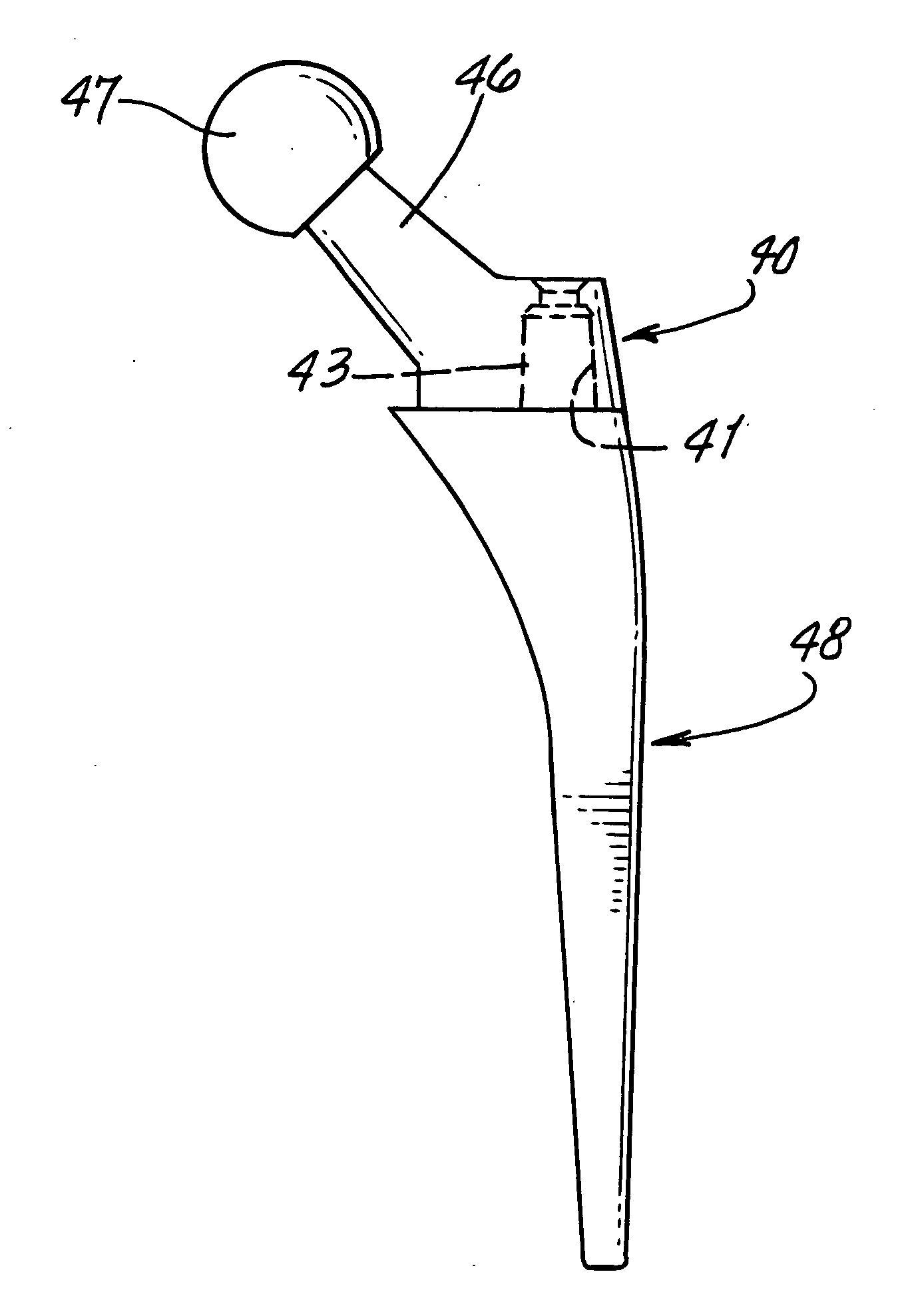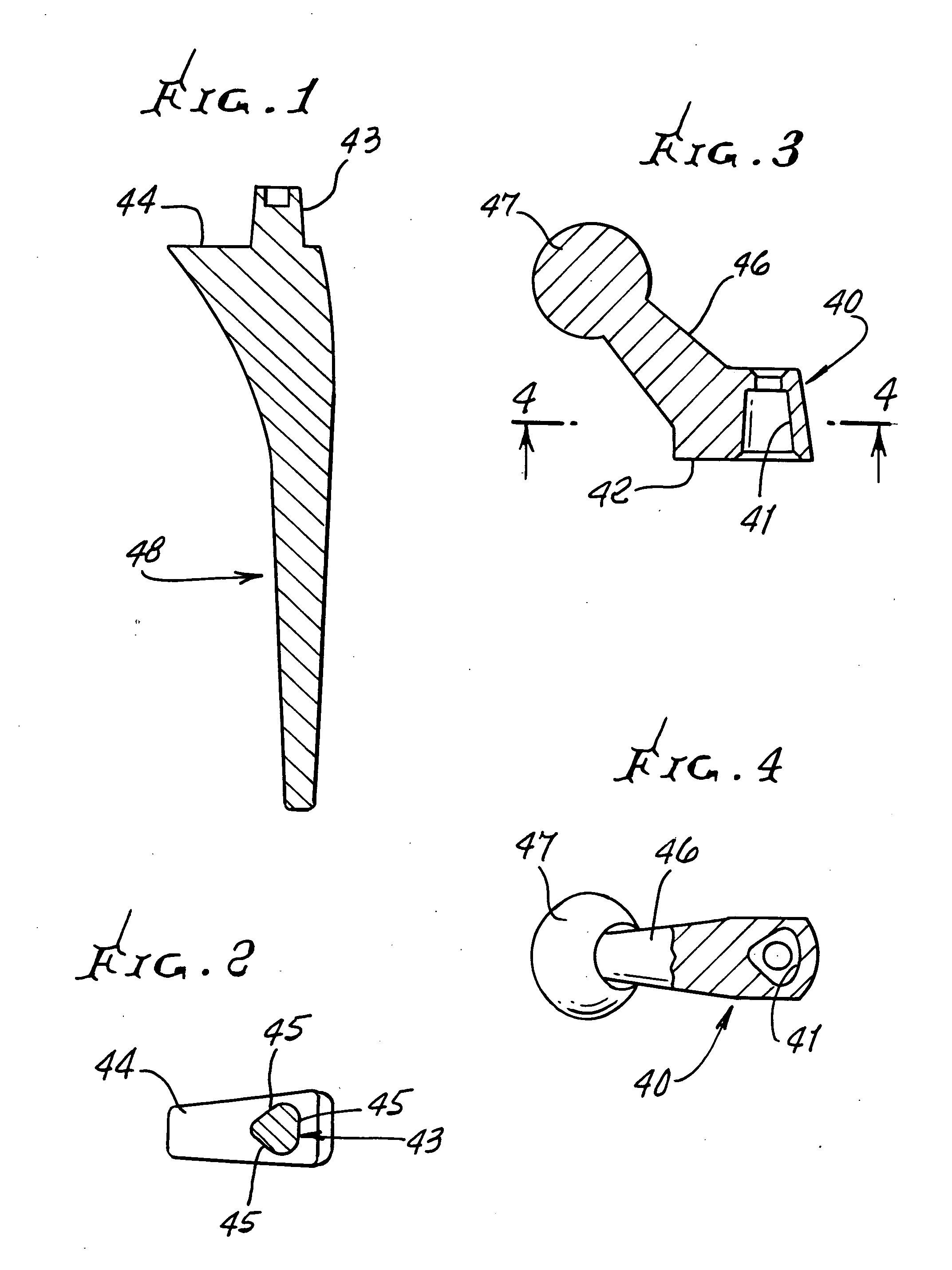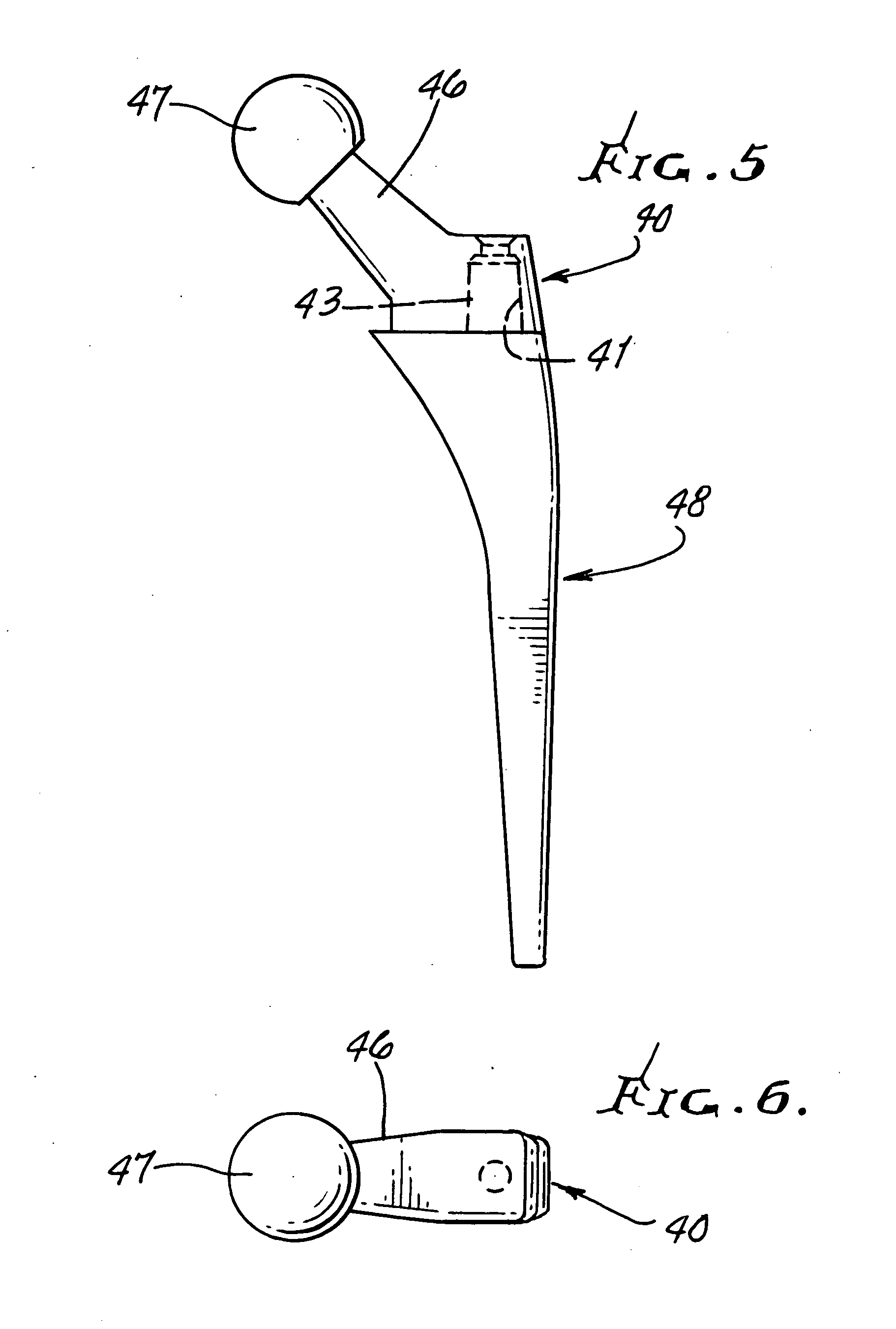Hip replacement process
a hip replacement and process technology, applied in the field of human hip replacement, can solve the problems of inability to fully rotate the hip, and inability to move the hip, and achieve the effect of accurate ball pivoting
- Summary
- Abstract
- Description
- Claims
- Application Information
AI Technical Summary
Benefits of technology
Problems solved by technology
Method used
Image
Examples
Embodiment Construction
[0053]Referring first to FIGS. 19-24, hip replacement components shown include a selected size generally longitudinally extending stem 10 having an enlarged upper end 10a, and a tapered lower end 10b, to fit endwise in a corresponding recess 11 formed in a leg bone, i.e. femur 12. One laterally and upwardly extending neck 13 carrying a ball 14 is shown in FIG. 21, and these elements are also shown in FIG. 22. One size selected base 15 carries the neck and ball in FIG. 21, and another size selected base 16 carries the neck and ball in FIG. 22, the dimensions and angularity of the necks 13 in FIGS. 21 and 22 are the same, and the carried ball sizes are the same.
[0054]Base 15 is generally of rectangular block shape and has a bottom horizontal wall 18, top wall 19, an upright right end wall 20, and an upright left end wall 21. The dimension between walls 20 and 21 is indicated as x1. Base 16 is also generally of rectangular block shape, having a bottom horizontal wall 22, top horizontal...
PUM
 Login to View More
Login to View More Abstract
Description
Claims
Application Information
 Login to View More
Login to View More - R&D
- Intellectual Property
- Life Sciences
- Materials
- Tech Scout
- Unparalleled Data Quality
- Higher Quality Content
- 60% Fewer Hallucinations
Browse by: Latest US Patents, China's latest patents, Technical Efficacy Thesaurus, Application Domain, Technology Topic, Popular Technical Reports.
© 2025 PatSnap. All rights reserved.Legal|Privacy policy|Modern Slavery Act Transparency Statement|Sitemap|About US| Contact US: help@patsnap.com



